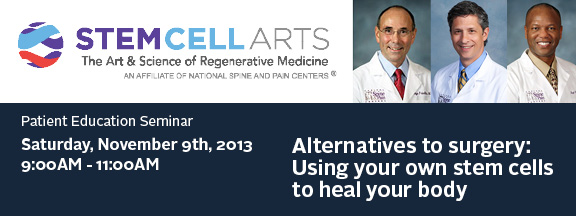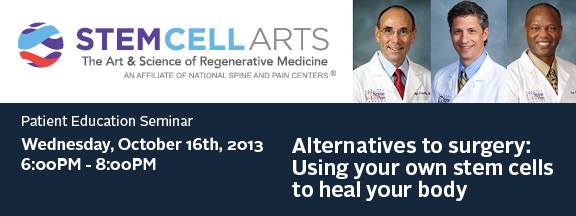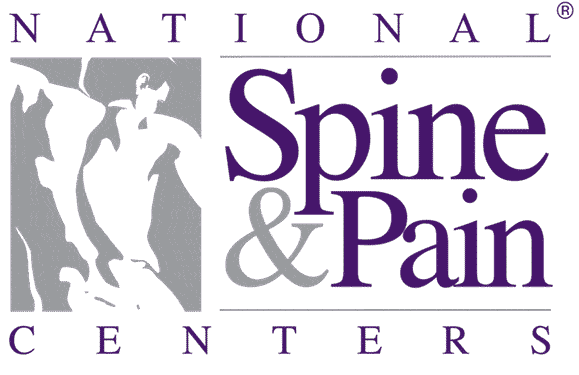
Nov 22, 2013 | Blog, Research, Stem Cell Procedures
New Data out from Regenexx this week shows that BMI may not impact outcomes of stem cell procedures. The data is based on the Regenexx advanced treatment registry, which collects outcome information as patients are treated. Their biostatistician queried the database for Regenexx-SD (same-day) knee stem cell treatment patients vs. their Body Mass Index (BMI). BMI means the patient’s weight vs. their height. The current guidelines state that normal weight is a BMI of 18.5-25 and overweight is 25-30 and obese is >30.
BMI had previously been considered to be one factor that may produce different outcomes for an individual, but the new data shows that at 1 month, 3 month, 6 months and 12 month follow-ups after the procedure, there was no indication that a high BMI had any impact on a patient’s outcome.
Click here for a PDF infographic showing the BMI outcome comparisons.

Nov 13, 2013 | Prolotherapy, PRP, Spine and Neck
[youtube id=”bxN9BcfgBYQ” width=”600″ height=”350″]
The Sacroiliac (SI joint) is where the spine attaches to the pelvis in the lower part of the back. While not moving much (only about 3 degrees), the motion of this joint is very important for communication between the back and the pelvis when we walk or transition from sitting to standing. The joint absorbs all the forces of the upper body before balancing and transferring the weight to the hips and legs.
The SI joint can be twisted in a fall, or the pelvis can expand during a pregnancy and never return to the proper position. The result is that the ligaments are stretched, and lose some of their elasticity (similar to an overstretched rubber band). The SI joint will then over-rotate and potentially lock in one position. It changes the mechanics of the entire back, causing severe pain. The sacrum, which is part of the SI joint, attaches to the L5S1 disc just above it. If the sacrum is not functioning properly, it adds additional load on the disc connected to it, potentially causing a tear in the disc. The result is chronic pain when bending, twisting, getting up and down, and lifting heavy objects. The ligaments in the joint continue to stretch over time and the symptoms come on more frequently.
SI Joint Injury: How is it identified?
An injury to the SI joint can be a common source of pain in the lower back, buttocks, groin and legs. With these generalized symptoms, it can be easily confused with other causes of back pain. Additionally, this type of injury often does not show up on x-ray or MRI, making detection difficult.
To confirm diagnosis of an SI Joint injury, a local anesthetic or nerve block is administered at the site of the SI joint to accurately pinpoint whether the joint is the source of pain. If pain is relieved, it works towards confirming the diagnosis. The diagnosis is further confirmed through a review of patient history, a physical examination and other diagnostic tests. Once diagnosed, a treatment plan, utilizing part or all of the following, can be developed to jump start healing.
Prolotherapy
Prolotherapy contains a solution of concentrated dextrose and local anesthetic (steroids are not used). This solution irritates the tissue just enough to stimulate the body’s natural ability to heal, encouraging new growth and causing the tissue to heal faster and stronger.
Platelet Rich Plasma
Platelets initiate tissue repair by releasing growth factors. These growth factors start the healing process by attracting cells that repair us, including critical stem cells. Platelet Rich Plasma therapy intensifies this process by delivering a higher concentration of platelets. The therapy involves a small sample of the patient’s blood placed in a centrifuge to separate the platelets from the other blood components. The concentrated PRP is then injected into and around the point of injury, significantly strengthening the body’s natural healing. Our process for PRP is much different and sets us apart. Because our samples are all hand processed, we are able to produce PRP that is free of contaminating red and white cells, which can inhibit repair. This same special process also allows us to customize the concentration and volume for each individual and each injury type. This greatly improves outcomes.
It is through these treatments that a solution for recovery from an SI joint injury can be developed, instead of merely masking the symptoms. The result can be dramatic reduction in pain and return to mobility for the patient.

Oct 28, 2013 | Uncategorized
StemCell ARTS, an affiliate of National Spine and Pain Centers, is led by the area’s foremost regenerative medicine experts in Drs. Mayo Friedlis, Robert Wagner and Rodney Dade. This seminar is a great opportunity to learn more about regenerative stem cell procedures, get your questions answered and explore this unique treatment alternative to surgery.
Stem Cell and Blood Platelet Procedures offer a viable alternative for individuals who are suffering from joint pain, or who may be considering elective surgery or joint replacement due to injury or arthritis. Patients avoid the lengthy periods of downtime, and painful rehabilitation that typically follow invasive surgeries.
Event Info You’ll Need to Know:
- WHEN: Saturday, November 9, 2013 from 9:00 a.m. – 11:00 a.m.
- WHERE: 3031 Javier Rd., Suite 100, Fairfax, VA 22031
- PRESENTER: Mayo F. Friedlis, MD
Bring a spouse, other loved one, friend or colleague for a fun and informative evening discussing the exciting stem cell and blood platelet treatments that are now available to you. We wish you the best in health and hope to see you there.
Event Registration
To attend, please complete the form below. If you encounter problems, you may send the information by email to us at: rsvp@stemcellarts.com
[purehtml id=4]

Oct 1, 2013 | Blog, PRP, Research
A group of researchers at University Hospital of Parma in Italy collaborated to demonstrate potential benefit of PRP application to muscle strains.
Drs. Gernuzzi, Petraglia, Pedrini, De Fillipo, Pogliacomi, Verdano, and Constantino have recruited a total of 53 patients who had an acute muscle tear of various muscles in their university emergency room. Patients recruited were all recreational athletes in different sports such as volleyball, soccer, basketball, and dancing.
Ultrasound was used to grade the tear, and only grade II (moderate) tear was recruited for the study and they all received PRP injections under ultrasound guidance for a total of 3 times, one week apart of each other. The study demonstrated these patients treated with PRP demonstrated clinically meaningful improvement in pain scale (as measured by visual analogue scale of pain), improvement in visual characteristic on ultrasound, and 100% of patients returned to their regular sporting activity within 30 days of the last injection. Only one patient experienced a relapse of the injury by one year follow up.
This study was unique in that it looked at the efficacy of PRP application to acute muscle injuries whereas most PRP studies have investigated its application to chronic tendinous / ligamentous injuries or cartilage lesions.
Time to improvement in this study was also unique. Most chronic tendinous injuries have been reported to have much slower response to PRP (weeks to months), this study has suggested muscular application of PRP may result in faster resolution of pain and recovery of function.
While this study suggested safety and potential benefit to PRP application to acute, moderate muscle tears, further study is warranted to compare PRP with conventional conservative treatment (a design known as a randomized control trial), and also, future studies should investigate the effect of PRP per different muscle types.
View Abstract: http://www.ncbi.nlm.nih.gov/pubmed/23867186

Sep 28, 2013 | Blog

StemCell ARTS, an affiliate of National Spine and Pain Centers, is led by the area’s foremost regenerative medicine experts in Drs. Mayo Friedlis, Robert Wagner and Rodney Dade. This seminar is a great opportunity to learn more about regenerative stem cell procedures, get your questions answered and explore this unique treatment alternative to surgery.
Stem Cell and Blood Platelet Procedures offer a viable alternative for individuals who are suffering from joint pain, or who may be considering elective surgery or joint replacement due to injury or arthritis. Patients avoid the lengthy periods of downtime, and painful rehabilitation that typically follow invasive surgeries.
Event Info You’ll Need to Know:
- WHEN: Wednesday, October 16, 2013 from 6:00PM to 8:00PM
- WHERE: 3031 Javier Rd., Suite 100, Fairfax, VA 22031
- PRESENTER: Mayo F. Friedlis, MD
Bring a spouse, other loved one, friend or colleague for a fun and informative evening discussing the exciting stem cell and blood platelet treatments that are now available to you. We wish you the best in health and hope to see you there.





